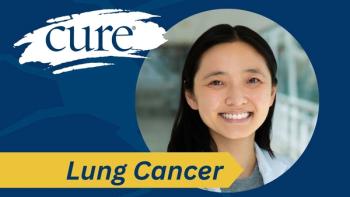For patients with metastatic triple-negative breast cancer, clinical activity with Trodelvy (sacituzumab govitecan) stays consistent, researchers found.
Enhertu (trastuzumab deruxtecan) in a subgroup with HER2-low disease also continued to demonstrate promising clinical activity after administration of Trodelvy, suggesting the use of sequential antibody-drug conjugates in this population.
As clinical trials may not accurately represent the patient population, a real-world study from 2021 to 2023 was conducted that allows the data to be more applicable to patients.
“It is always important, even if we get the results from the clinical trials, to do real-world studies to see if the clinical benefit or the benefit from the drug is the same in the real-world population or not,” said Dr. Arya Roy, a breast medical oncology and assistant professor at The Ohio State Comprehensive Cancer Center, in an interview with CURE®.
Glossary
Metastatic: disease spread.
Objective Response Rate (ORR): the percentage of people whose disease shrunk or disappeared after treatment.
Progression-free survival (PFS): how long a person lives without their disease getting worse.
Anemia: a lack of red blood cells.
Neutropenia: a lack of white blood cells.
Primary refractory disease: cancer that either does not respond to treatment or comes back after finishing treatment.
According to a study published in JCO Oncology Practice, the objective response rate (ORR) in patients with metastatic triple-negative breast cancer was 27.8% and the median progression-free survival (PFS) was 4.8 months. In patients with HER2-low metastatic triple-negative breast cancer who received Enhertu after Trodelvy, the ORR to Enhertu was 34.8% and the median PFS was 7.0 months.
“[Trodelvy] gives an option to patients who don’t have any targetable mutations or who don't have any immune markers where we could use immunotherapy. So, I would say that Trodelvy is definitely a good drug, especially for triple-negative breast cancer patients, where we don't have a lot of options,” Roy said.
Severe or worse side effects were seen in 50.9% of patients. These consisted of neutropenia in 35.7% of patients, anemia in 27%, vomiting in 16.5%, fatigue in 8.7% and diarrhea in 7%. Reductions in dose size and discontinuation of treatment because of side effects were required in 51.3% and 13.2% of patients, respectively. Three patients received Enhertu after discontinuing Trodelvy because of severe side effects such as fatigue, anemia and diarrhea, which did not occur after starting Enhertu. The rate of any severity of side effects was 97.3%.
“In the clinical trial also, [neutropenia] was the most common side effect that we saw, and in our real-world study as well, but it is manageable because we have drugs called G-CSF, or granulocyte colony-stimulating factors, which are specific drugs that are given to increase the number of white [blood] cells in your body.
READ MORE: Keytruda Plus Radiation Therapy Shows Promis for Patients With Breast Cancer
Among 115 patients, the median age during initiation of Trodelvy was 60 years and all patients were female. A total of 61 patients had primary refractory disease and the median number of previous therapies in the metastatic setting was two. The intensity of the median relative dose was 92%.
In addition, the most common organs affected by metastases were bone (55.7%), lung (53.9%), liver (50.4%) and brain (21.7%). During the time of Trodelvy initiation, four patients received local therapy to the brain, and others had stable brain metastasis.
“So, there are several challenges still, because one thing is, triple active breast cancer is a very aggressive phenotype. So even if we have all these drugs, if the patient is not eligible to get immunotherapy, then that is actually a major limiting factor, because we are taking one line of treatment completely out. So then the patients will have limited options,” Dr. Roy said.
References
“Real-World Clinical Outcomes With Sacituzumab Govitecan in Metastatic Triple-Negative Breast Cancer” by Dr. Sabah Alaklabi, et al., Journal of Clinical Oncology.
For more news on cancer updates, research and education, don’t forget to subscribe to CURE®’s newsletters here.





